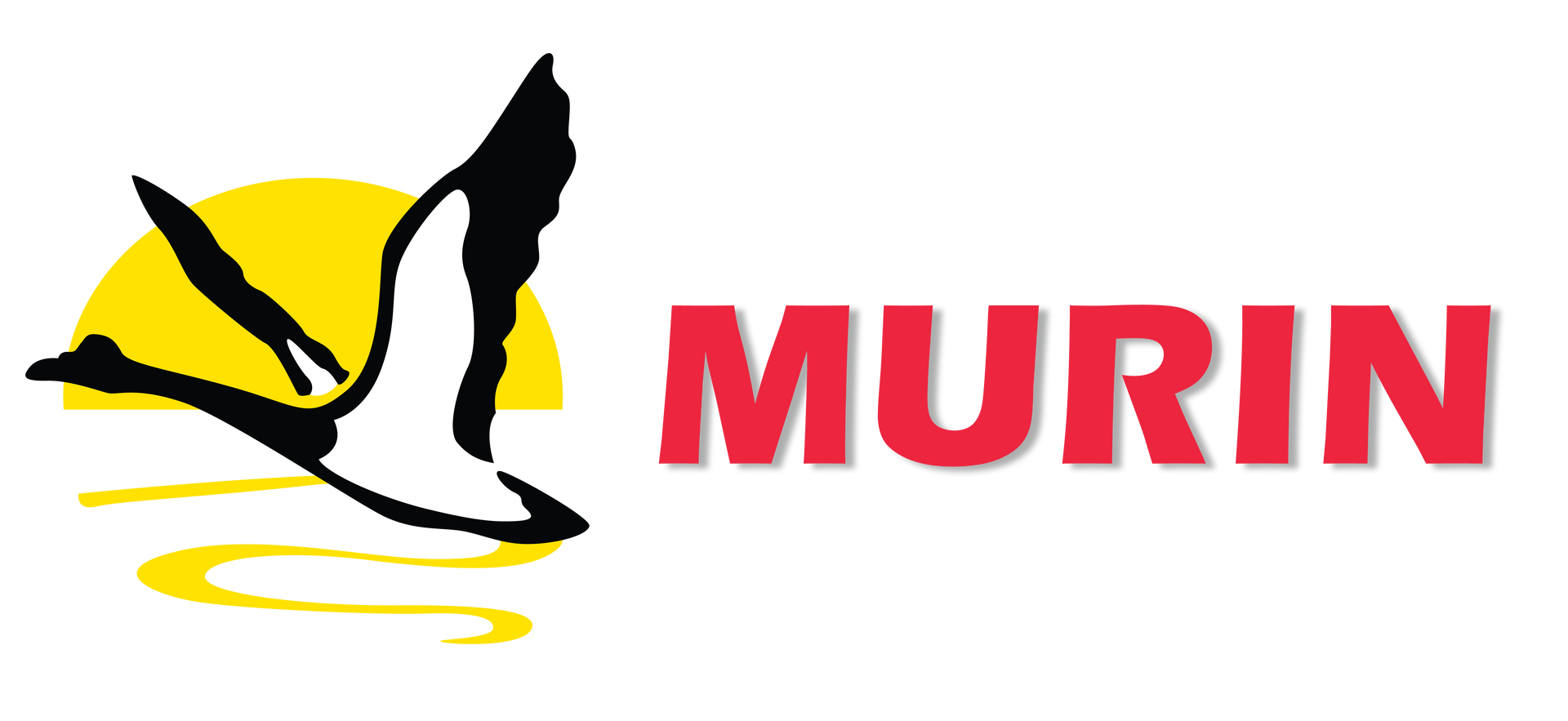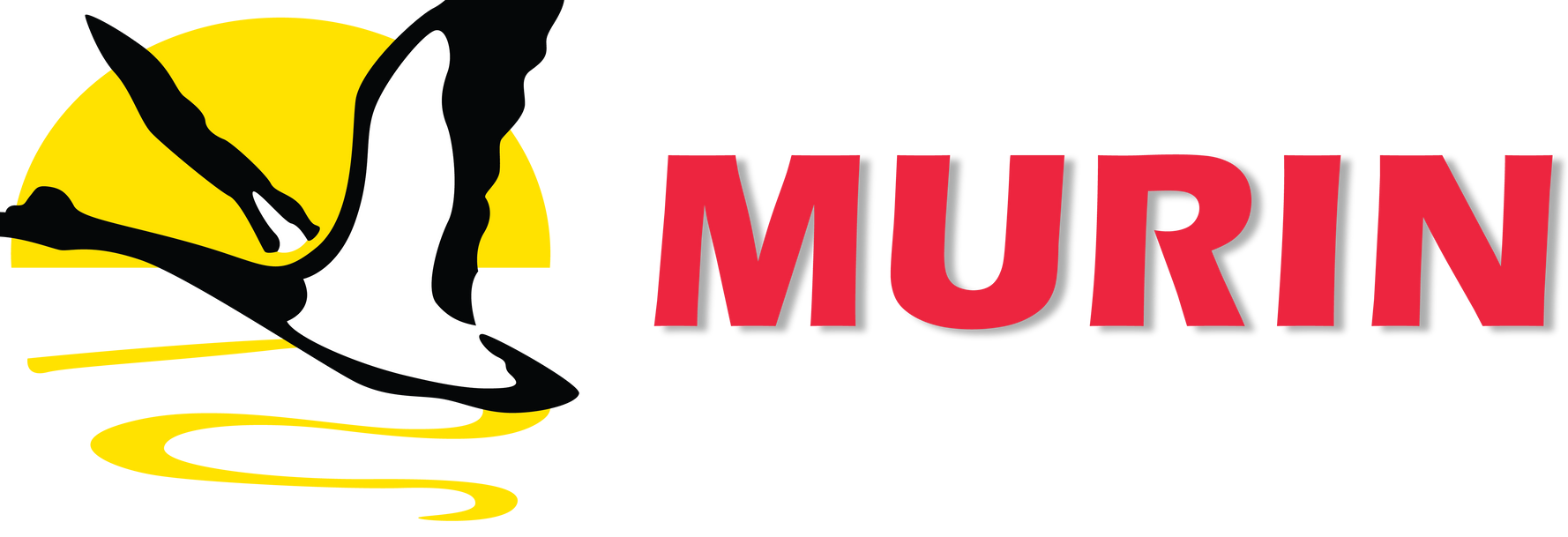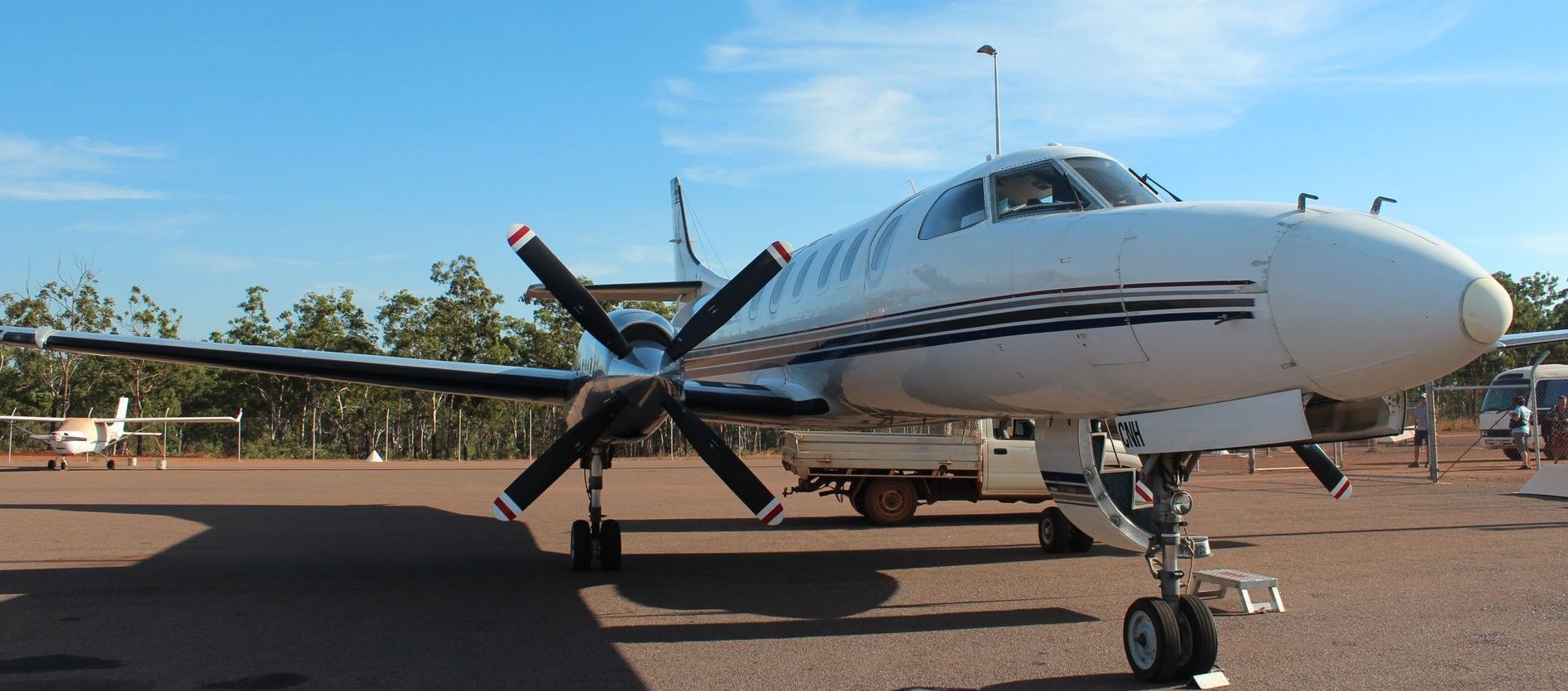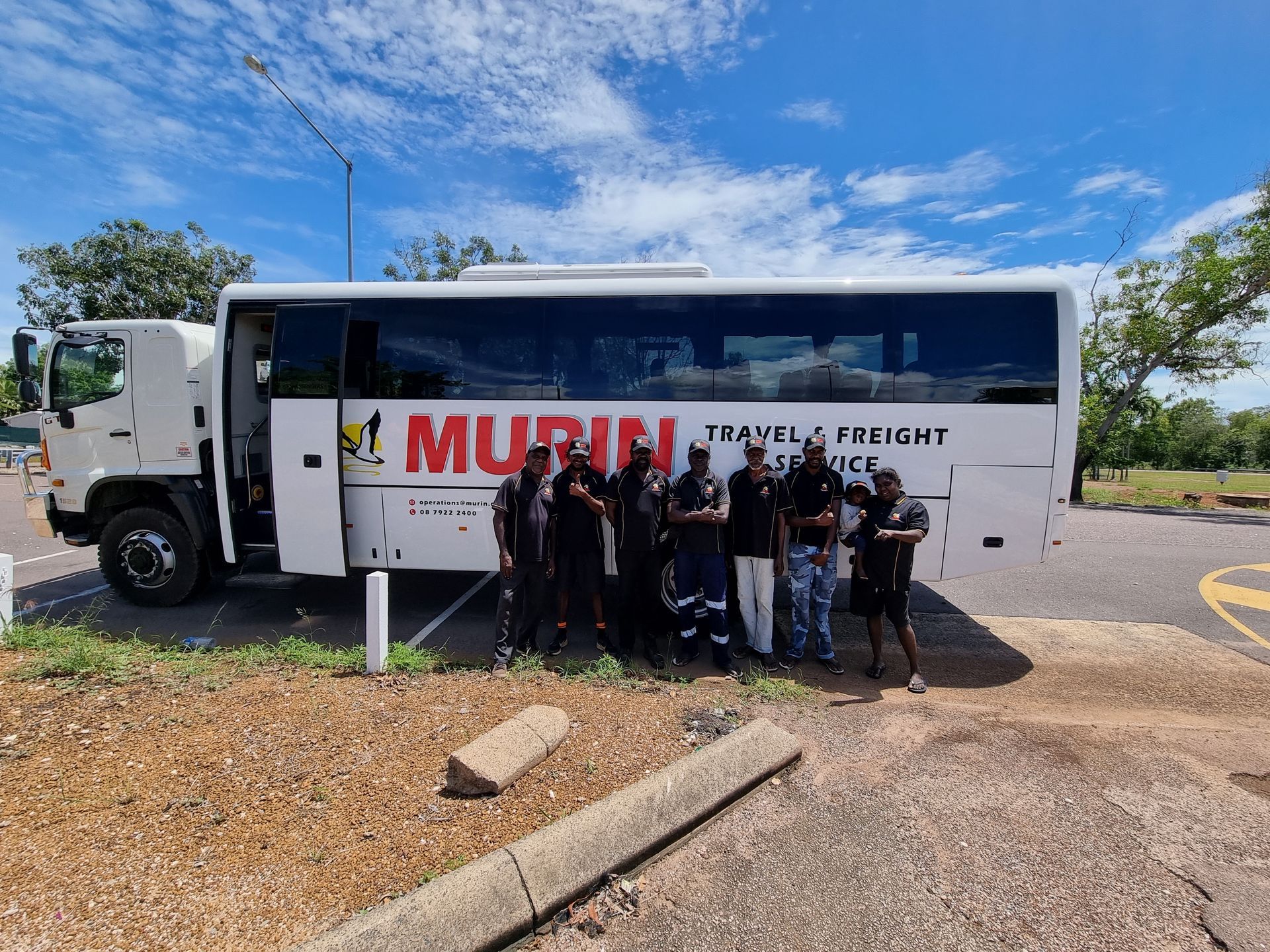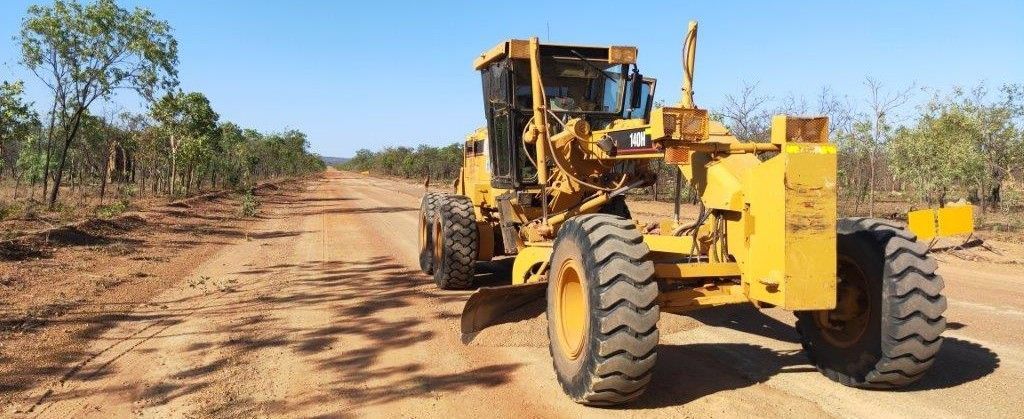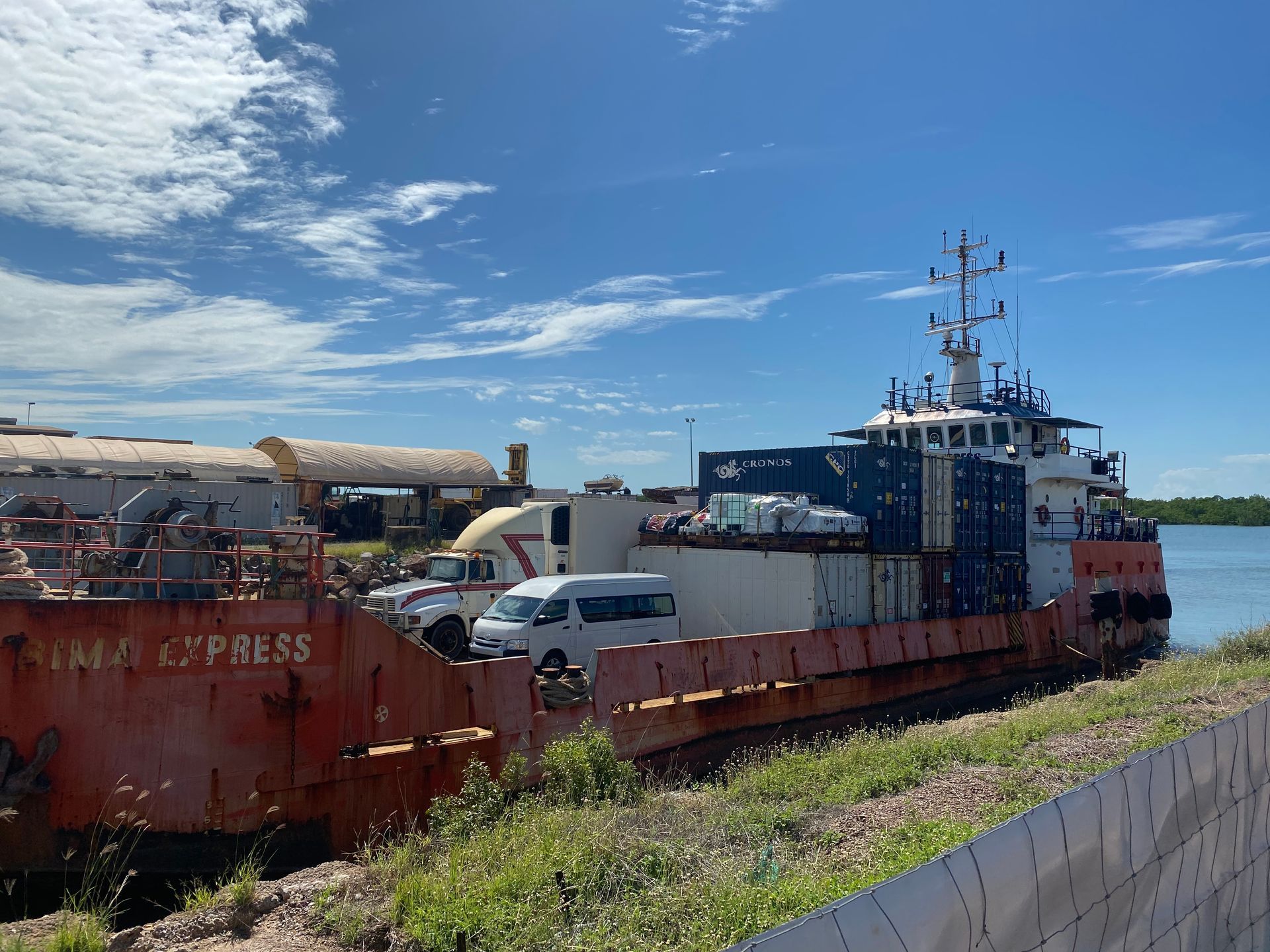Our History
Proudly Aboriginal-owned and guided by Country, Murin has grown from humble beginnings into a trusted organisation delivering vital services across the Thamarrurr Region.
Our Association
Murin Association History
Murin Association Incorporated is an Aboriginal-owned and governed organisation based in Wadeye, Northern Territory. Established in 1973 through the leadership and vision of local elders, Murin began with a single, urgent goal—to ensure essential air access to Wadeye for its people. Using funds contributed by the community, Murin secured ongoing flight services, marking the start of its enduring role in delivering services by and for Aboriginal people.
From these humble beginnings, Murin has grown into a respected and diverse regional organisation, providing transport, freight, infrastructure, and community services across the Thamarrurr Region. Guided by strong relationships with Traditional Owners and a deep commitment to cultural connection, Murin continues to adapt to the needs of its communities, supporting both day-to-day living and long-term aspirations for safety, harmony, and sustainable development on Country.
The Thamarrurr and Daly Region
The Thamarrurr and Daly Region lies in the southwest of the Northern Territory, encompassing Wadeye, the main service hub, along with the surrounding Homelands and smaller communities such as Palumpa and Peppimenarti.
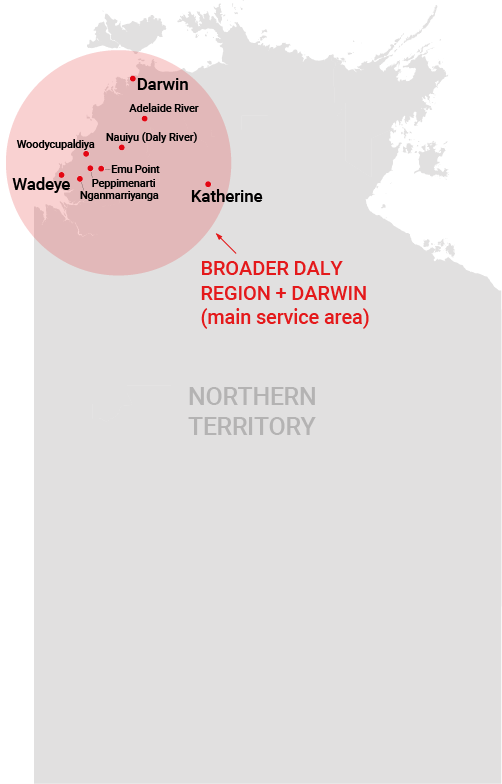
Covering around 14,000 square kilometres, the region is characterised by a rich and diverse environment that includes coastline, wetlands, monsoon forests, and open savanna woodlands.
This Country is home to more than twenty clan groups, each with deep cultural, spiritual, and historical ties to their land and sea. The Thamarrurr governance system brings together representatives from the three major ceremonial groups—Tharnpa, Wangga, and Lirrga—to guide decisions affecting the region.
Seasonal changes strongly shape life here: during the Wet Season, road access is limited, with many Homelands only reachable by air and boat.
The region’s communities balance the challenges of remoteness with the opportunities that come from strong cultural foundations, a resilient population, and growing interest in tourism, economic development, and improved infrastructure to support sustainable living on Country.
Thamarrurr Homelands
The Thamarrurr Homelands are small, family-based settlements linked to specific clan groups, each holding deep cultural, spiritual, and historical ties to their Country. For many people in Wadeye and other larger communities, these Homelands are vital places to live, connect with ancestors, and pass on language, customs, and land management knowledge.
While larger towns provide access to essential services, Homelands offer a quieter, safer environment where families can maintain cultural practices such as hunting, fishing, and ceremony. Seasonal travel between Wadeye and Homelands strengthens social, cultural, and family connections, supporting overall wellbeing.
Despite challenges like limited infrastructure and seasonal access, Homelands remain central to the cultural resilience, identity, and health of the Thamarrurr people. Sustaining these places benefits not only individual families but the strength of the entire region.
